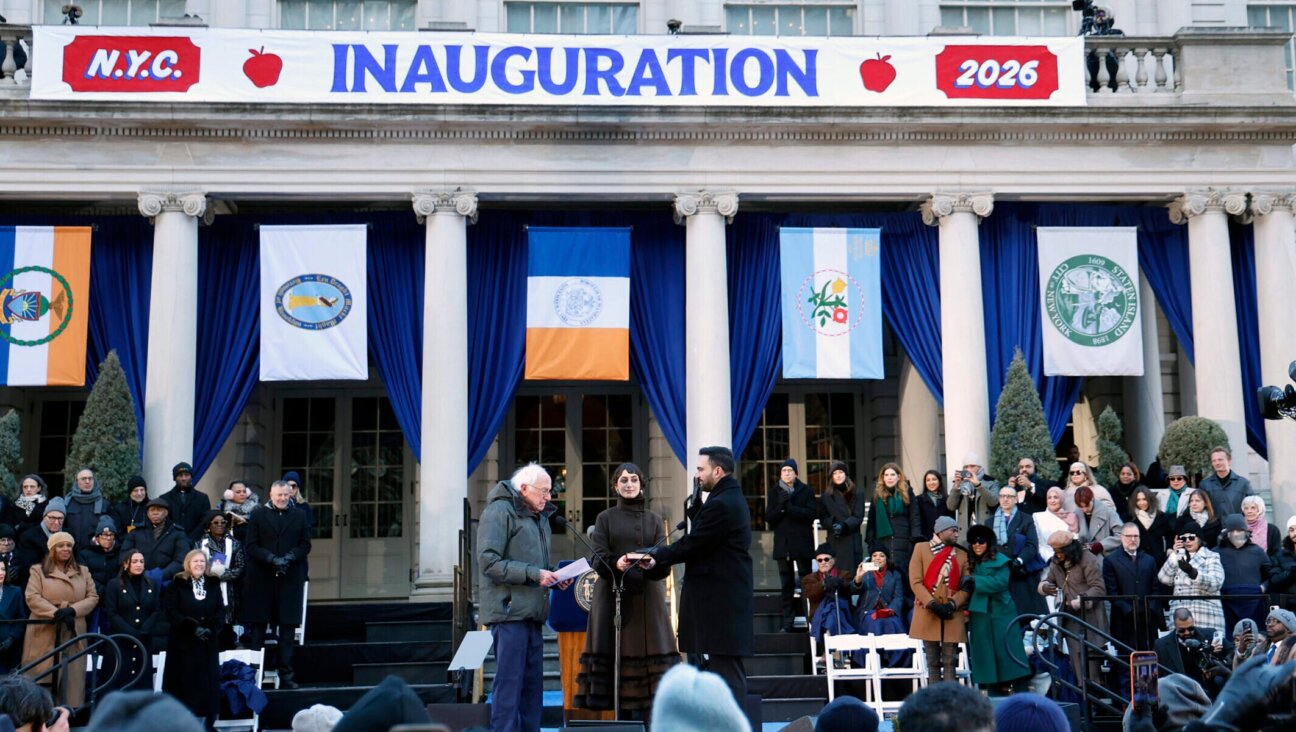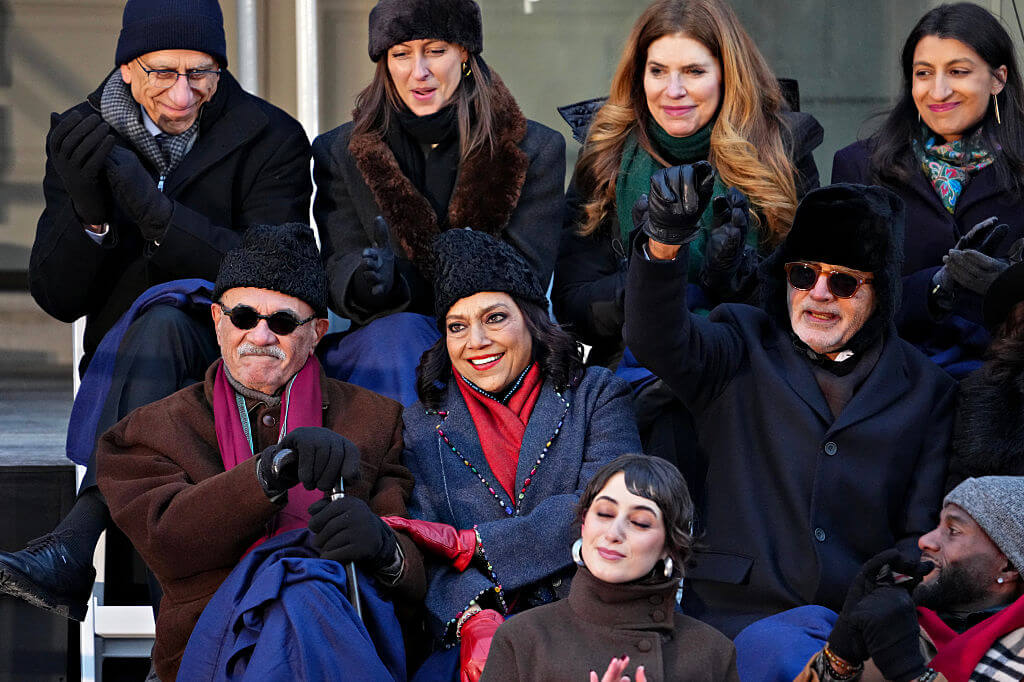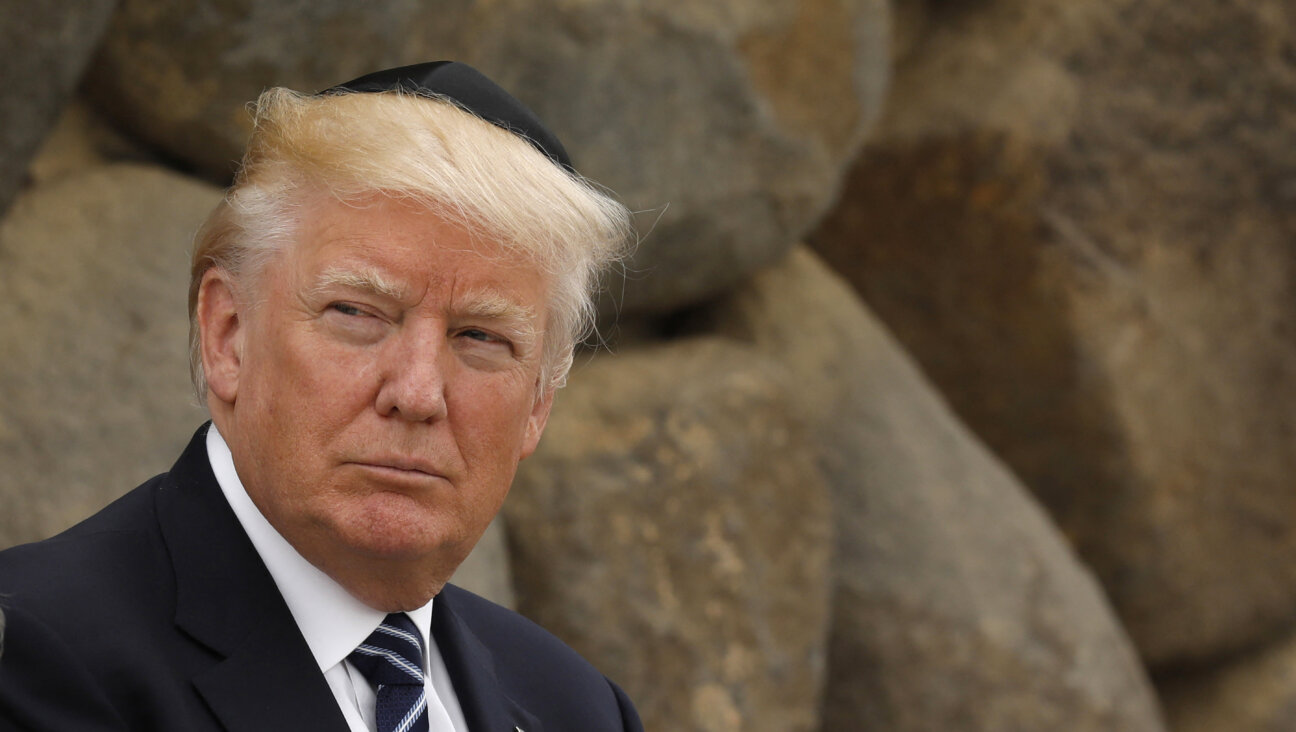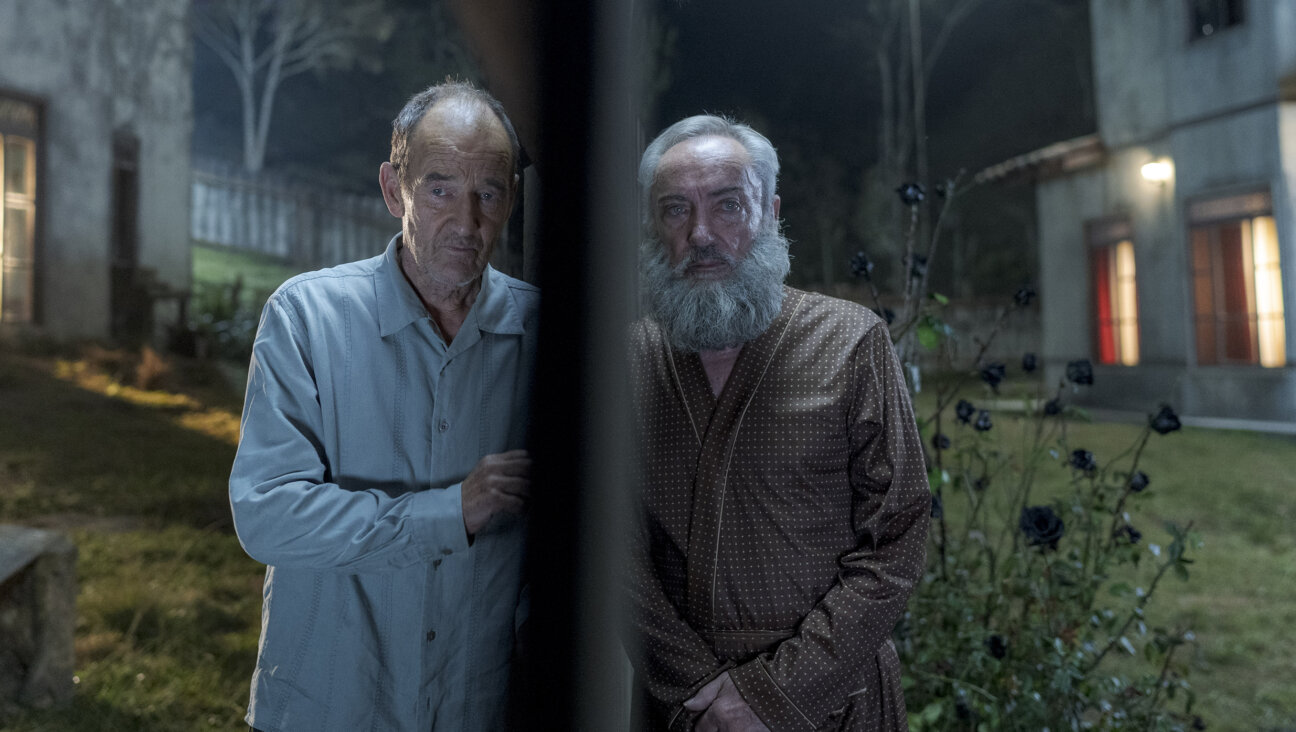Philadelphia Jewish museum won’t rehang Israeli flag now after it was vandalized twice in a week
The Weitzman National Museum of American Jewish History joins a growing list of Jewish cultural sites targeted since Oct. 7
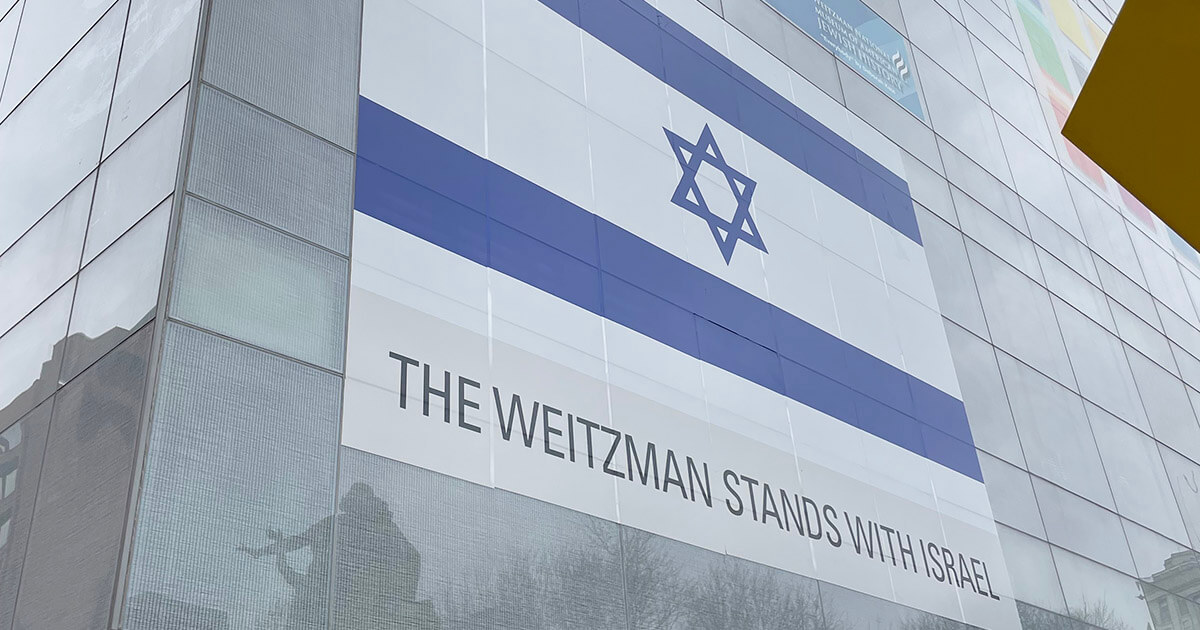
“The Weitzman stands with Israel” sign as seen in Feb. 2024 on the exterior of the Weitzman National Museum of American Jewish History in Philadelphia. Photo by Julie Moos
For the second time in just over a week, Philadelphia’s Jewish museum was targeted with red paint splattered across a large Israeli flag that hangs on the building’s facade. It’s the latest in a string of attacks on Jewish cultural institutions.
Philadelphia police confirmed they are investigating both incidents at the Weitzman National Museum of American Jewish History, which sits at the corner of South Independence Mall East and Market Street.
In recent months, Jewish cultural institutions from Portland to Paris have faced similar vandalism. The Oregon Jewish Museum in Portland discovered blue swastikas sprayed across its doors in late July. In New York, a man in Greenwich Village scrawled “Gaza” on a Jewish art museum in late May. And in Paris, green paint was splashed across the Holocaust memorial and several synagogues also in May. Last summer, vandals left red paint and banners outside the Brooklyn Museum director’s home, accusing her and other Jewish officials of being Zionists.
Such incidents reflect a shift since the Oct. 7, 2023, Hamas attacks in Israel and ensuing war in Gaza, when antisemitic harassment and vandalism spiked in the United States and abroad. The Anti-Defamation League reported more than 9,000 antisemitic incidents nationwide last year, including 465 in Pennsylvania alone.
In the state’s capital, an arsonist set fire to the home of Pennsylvania Gov. Josh Shapiro on the first night of Passover when Shapiro and his family were sleeping inside. The blaze destroyed the dining room where, hours earlier, they had hosted a Seder. “It looked like a bomb had gone off in the middle of our home,” Shapiro wrote of the incident. The man accused of the crime, Cody Balmer, told 911 operators that he targeted Shapiro for his pro-Israel positions; he later told law enforcement he wanted to beat the governor with a sledgehammer.
“The Weitzman Museum is literally steps away from the birthplace of democracy and a symbol of liberty and justice for all,” Shapiro said in a statement provided to the Forward. “Antisemitic vandalism has no place there — or anywhere in the Commonwealth of Pennsylvania – and must be universally condemned. Expressing views through acts of hate doesn’t further a cause.”
The Weitzman said passersby won’t be seeing the Israeli flag in the immediate future. “We had been planning to refresh the façade signage with ‘Bring Them Home Now’ hostage messaging as we approach the incomprehensible two-year anniversary of their inhumane captivity,” a museum spokesperson said. “In light of the timing of the vandalism, we are working to install that signage sooner rather than replacing the flag for only a short time.”
The Weitzman, founded in 1976, is dedicated exclusively to the American Jewish experience. A private nonprofit supported largely through donations, it moved into its current home in 2010: a 100,000-square-foot building designed by architect James Polshek. Its location on Philadelphia’s Independence Mall places it alongside the Liberty Bell and Independence Hall, situating the story of American Jewry within the nation’s broader founding narrative.

The museum’s core exhibition spans more than three centuries, from colonial Jewish life to contemporary debates over identity and belonging. Artifacts include George Washington’s 1790 letter pledging religious freedom to the Jewish community of Newport, Rhode Island, and materials documenting Jewish roles in the labor movement, civil rights activism, the arts, and popular culture. Temporary exhibitions have included a memorial about the Nova music festival massacre, as well as artifacts from the 2022 synagogue hostage crisis in Colleyville, Texas.
Last year, both the House and Senate passed bills to explore making the museum part of the Smithsonian Institution. President Joe Biden signed it into law in December 2024, and created a commission to study the issue. Its current status is as an affiliate of the Smithsonian.
The back-to-back incidents have been unsettling, especially given the Weitzman’s location in one of the city’s most prominent civic corridors. Tourists walking between the Constitution Center and Independence Hall passed cleanup crews trying to wash away the latest red paint.
“I’m sad. I’m hurt. I’m scared. I live in a country that’s at war, and I feel 10 times safer there,” Deena Kalker, a college student from Israel visiting Philadelphia, told a local TV station. “It makes me sad that people see the flag and that’s what they think.”


